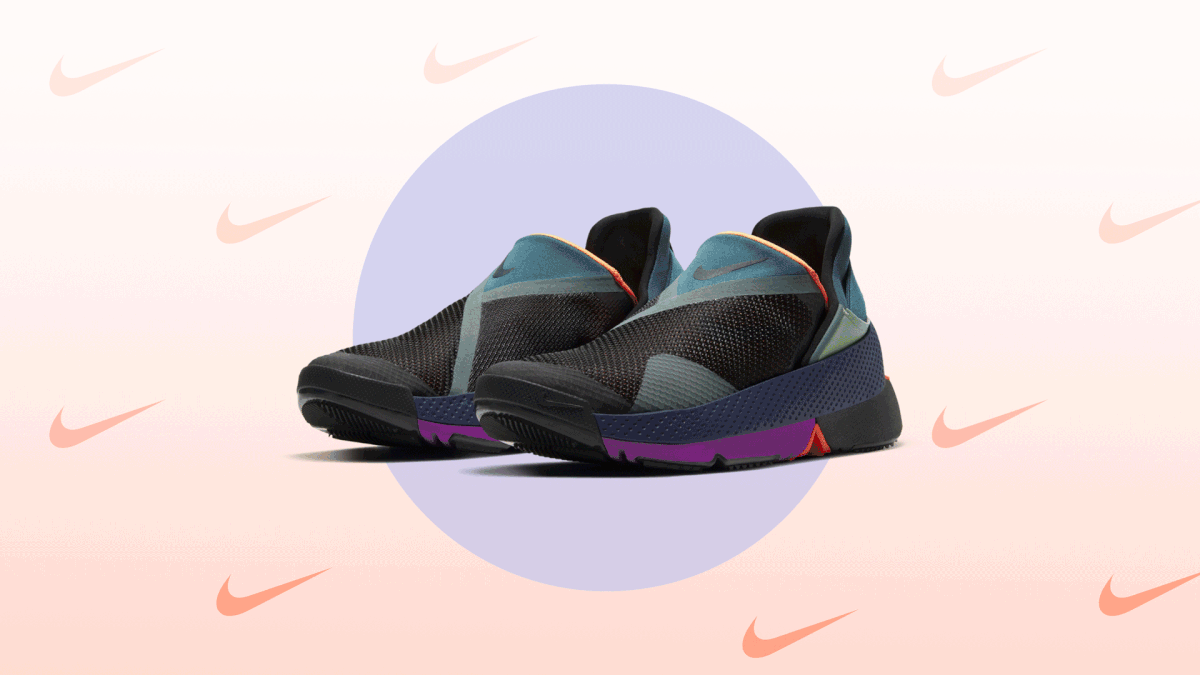

Nike introduced its first-ever hands-free sneaker, the Nike GO FlyEase, on February 1, and its origin can be traced back nearly a decade to when a boy with cerebral palsy wrote a letter to the company.
Matthew Walzer, now 25, was born two months premature, weighing only two pounds, 14 ounces. His lungs were not fully developed, and so his brain did not receive enough oxygen. This lack of oxygen led to brain injury that resulted in cerebral palsy, a group of disorders that affect a person's movement, balance, and posture, according to the Centers for Disease Control and Prevention.
Fast-forward 16 years to 2012: Walzer was entering his junior year of high school. Like many other kids his age, he was excited about applying to college. But one thing was on his mind, and he decided to write a letter to Nike about it.
"Out of all the challenges I have overcome in my life, there is one that I am still trying to master, tying my shoes," wrote Walzer. "Cerebral palsy stiffens the muscles in the body. As a result I have flexibility in only one of my hands which makes it impossible for me to tie my shoes. My dream is to go to the college of my choice without having to worry about someone coming to tie my shoes every day."
Walzer continued that he believed everyone—"no matter what their physical, economic, or social circumstances may be"—deserves not only to call themselves an athlete, but to experience freedom and independence. "If Nike would design and produce basketball and running shoes with moderate support and some kind of closure system that could be used by everyone, Nike could create a shoe line that attracts people that face the same physical challenges I did and still do, yet it could still be possible for anyone to wear them," he wrote.
Nike was moved to act. The same year, the company designed a shoe that used a zipper rather than laces and created the prototype for Walzer to test. Three years later, Nike introduced the FlyEase line, which the company describes as "an easy-entry footwear system designed… to help athletes of all abilities and ages perform better."
Now, about nine years after Walzer's letter, Nike has introduced its newest shoe to the line—one that doesn't require any hands at all. The Nike GO FlyEase's kickstand heel, hinged design, and pop-and-snap technology allow wearers to use only their feet when putting on and taking off the sneaker.
Many people have voiced their appreciation of the inclusive design on social media. "Disability design for the win!," one user tweeted.
"Because of my disability I don't have all my fine motor skills which means I can't my tie shoes. I usually would have to get somebody else at the gym to tie my shoes pre-pandemic," another tweeted. "I'm looking forward to this. The price point is a little high for some people but I'm OK with it."
As social media users have pointed out, the design can help not only people like Walzer who have chronic disabilities, but also those who may have a problem bending down and/or using their hands for their shoes in the short term, such as people who are pregnant or people recovering from surgery. In a press release, Nike also noted how the shoe "translates to serving the broadest range of active lifestyles possible."
"I would have like these shoes during the third trimester of my pregnancy with twins, when I could not bend and had trouble putting my shoes on," another user tweeted. "Would probably still like it."
"The original concept around this shoe was to support our adaptive athletes better, and we just quickly throughout the process found that this shoe was really universal," explained Nike GO FlyEase designer Haley Toelle in a promo video. "Everyone around the table would be like, 'Oh, I need this shoe. I have kids, and this would save my life in the morning.' So I see that trickle-down effect of you always design for the most extreme case, that's the hardest thing to do, and then it open it up to everybody."
Walzer himself is excited about the new design, tweeting, "#DisabledLivesMatter The Flyease is for people of all abilities. Remarkable that one letter almost nine years ago continues to bring about so much change. #NikeLetter"
According to the Nike press release, the sneakers will initially be available to select Nike Members via invite. The shoe is expected to become available to the wider public later this year and, according to Yahoo Finance, will cost $120.
To get our top stories delivered to your inbox, sign up for the Healthy Living newsletter
Source: Read Full Article